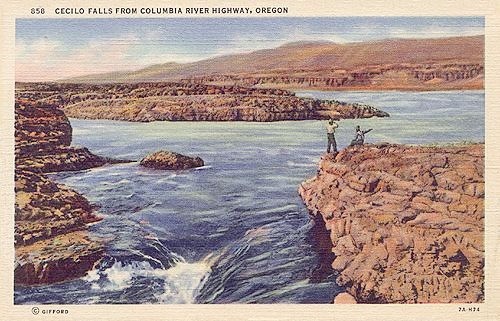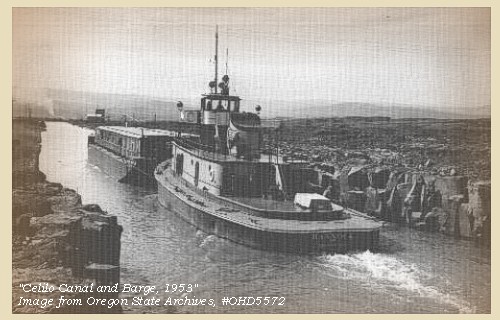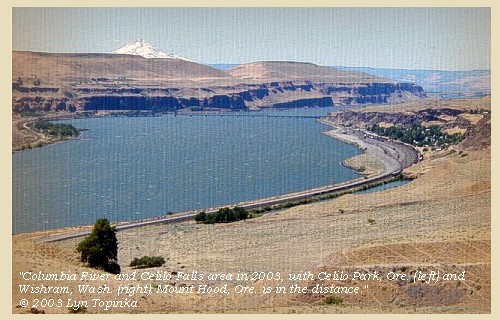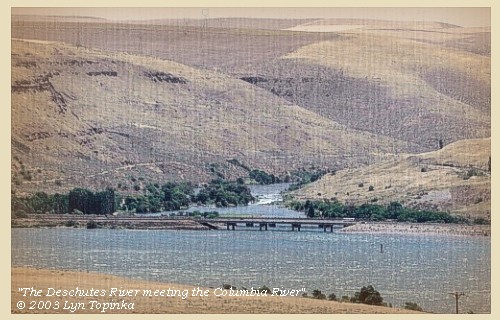The Volcanoes of
Lewis and Clark
Lewis and Clark
|
April 21, 1806 Up the Columbia - Celilo Falls to the Deschutes |
|
Home
The Volcanoes of Lewis and Clark Map of the Journey Volcanoes, Basalt Plateaus, Major Rivers, etc. The Volcanoes Mount Adams, Mount Hood, Mount Jefferson, Mount Rainier, and Mount St. Helens CALENDAR of the Journey October 1805 to June 1806 Along the Journey Pacific Northwest Maps - Columbia River, Volcanoes, Flood Basalts, Missoula Floods, Geology, etc. The Corps of Discovery The Journey of Lewis and Clark About the Reference Materials The Journals, Biddle/Allen, DeVoto, Gass, Moulton, Topo Maps, and others USGS Lewis and Clark Links Links to USGS Websites highlighting the Lewis and Clark Journey Resources Publications Referenced and Websites Visited |
PREVIOUS
April 18-20 Up the Columbia, The Dalles and "The Long Narrows" |
April 21
Up the Columbia, Celilo Falls to the Deschutes "Great Falls of the Columbia", Celilo Locks and Canal, Celilo Falls and Wishram (Washington), Mount Hood, Deschutes River, Deschutes River State Recreation Area, Miller Island |
CONTINUE
April 22 Up the Columbia, Deschutes to the John Day |
|
Heading for Home - April 1806
Up the Columbia - Celilo Falls to the Deschutes |
| Lewis and Clark's camp of April 19 and April 20, 1806, was on the Washington side of the Columbia River, upstream of today's The Dalles Dam. |
| Monday, April 21, 1806 |
| We had intended setting out at the same time, but one of our horses broke loose during the night, and we were under the necessity of sending several men in search of him. ...... At ten o'clock the men returned with the horse, and soon after, an Indian who had promised to go with us as far as the Chopunnish, came with two horses, one of which he politely offered to carry our baggage. We therefore loaded nine horses, and giving the tenth to Bratton, who was still too sick to walk, about ten o'clock left the village ...... |
| "... at 12 oClock Capt Lewis and party came up from the Skillutes Village with 9 horses packed and one which bratten who was yet to weak to walk, rode, and soon after the two small canoes also loaded with the residue of the baggage which could not be taken on horses. we had every thing imediately taken above the falls [Celilo Falls] ..." [Clark, April 21, 1806] |
| Lewis and Clark are on the Washington side of the Columbia passing the area of "The Great Falls of the Columbia", which they had to portage in October of 1805. Today Celilo Falls is under the waters of Lake Celilo, the reservoir behind The Dalles Dam. This area now is a prime sailboard area, and views of the river seen at Celilo Park, Oregon, and Wishram, Washington. Mount Hood, Oregon can be seen along this stretch of the Columbia. |
| encamped at a village of Eneeshurs [Washington side of the Columbia River], consisting of nine mat huts, a little below the mouth of the Towahnahiooks [Deschutes River]. ...... |
| "... After dinner we proceeded on about 4 miles to a village of 9 Mat Lodges of the Enesher: one of the canoes joined us, the other not haveing observed us halt continued on ..." [Clark, April 21, 1806] |
| "... We halted here two hours and then proceeded on again. The party that went by land had to leave the river, and take out to the hill a part of the way. I crossed with my canoe to the south side where there is the best water, and passed a large rock island [Miller Island] , opposite to which the Sho-sho-ne river [Deschutes River] flows in from the south. We went on till dark, and then run our small canoe among some willows, and laid down to sleep. We did not make any fire for fear the savages, who are very numerous along this part of the river, might come and rob us. ..." [Gass, April 21, 1806] |
|
|
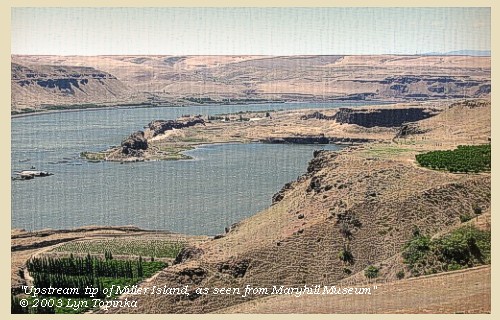
Miller Island: Miller Island is located at the mouth of the Deschutes River. This large island was given a descriptive name, "Rock Island" as Lewis and Clark headed towards the "Great Falls of the Columbia" and their first portage of the Columbia River rapids. Known today as Miller Island, the island was probably named after an early pioneer in the region. -- Washington State Historical Society Website, 2002 







|
|
|
|
The Camp - April 21, 1806:
Washington side of the Columbia River, across from the Deschutes River junction with the Columbia River. |
| Home | Previous | Continue |
If you have questions or comments please contact: GS-CVO-WEB@usgs.gov
June/July 2004, Lyn Topinka
The Volcanoes of Lewis and Clark Home Page | CVO Home Page


